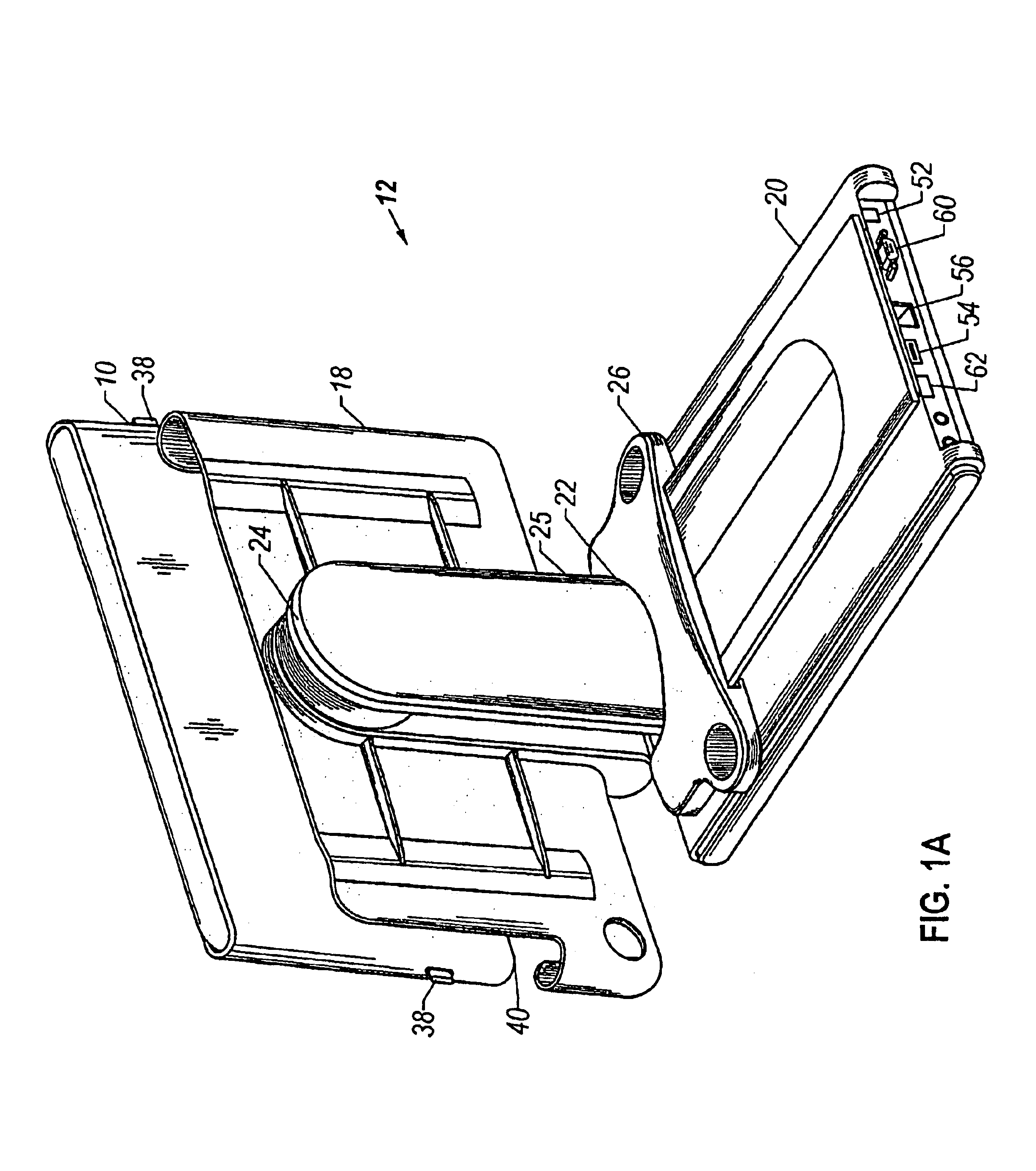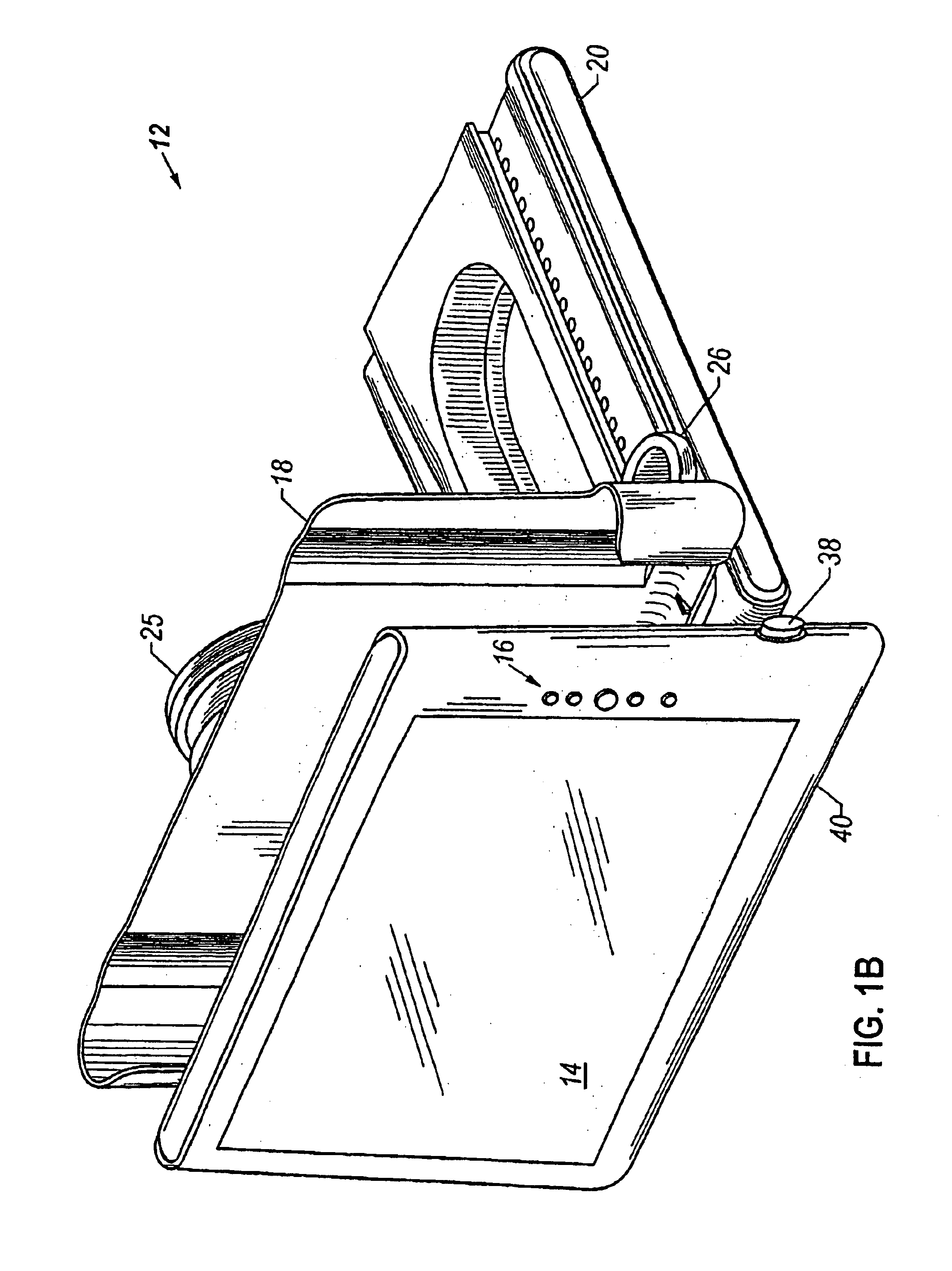Flexible circuit board for tablet computing device
a flexible circuit board and computing device technology, applied in the direction of coupling device connections, electrical apparatus casings/cabinets/drawers, instruments, etc., can solve the problems of conflicting expansion bases or docking stations, laptops that do not address all ergonomic and environmental concerns, and the existing pda and notebook clamshell implementations are not appropriate for all environments, etc., to improve the expansion base or docking station, simple construction, and economical manufacturing
- Summary
- Abstract
- Description
- Claims
- Application Information
AI Technical Summary
Benefits of technology
Problems solved by technology
Method used
Image
Examples
Embodiment Construction
[0036]Preferred embodiments of the present invention are illustrated in the FIGURES, like numerals being used to refer to like and corresponding parts of the various drawings.
[0037]The present invention provides a tablet computer that is received by a docking station. This docking station comprises a docking assembly operable to be positioned with three degrees of freedom, bearing a data connector that mechanically supports and interfaces with the tablet computer. A support member couples the docking assembly to an expansion base, wherein the base comprises a plurality of ports that can interface with a variety of peripheral devices or power supplies. These various ports are mounted to a printed circuit board contained within the expansion base. A flexible printed circuit (FPC) combines the signal pathways for the variety of ports, allowing the signal pathways to travel from the printed circuit board and to the data connector. The tablet computing device has a plurality of contact o...
PUM
 Login to View More
Login to View More Abstract
Description
Claims
Application Information
 Login to View More
Login to View More - R&D
- Intellectual Property
- Life Sciences
- Materials
- Tech Scout
- Unparalleled Data Quality
- Higher Quality Content
- 60% Fewer Hallucinations
Browse by: Latest US Patents, China's latest patents, Technical Efficacy Thesaurus, Application Domain, Technology Topic, Popular Technical Reports.
© 2025 PatSnap. All rights reserved.Legal|Privacy policy|Modern Slavery Act Transparency Statement|Sitemap|About US| Contact US: help@patsnap.com



